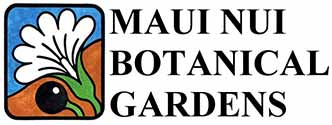‘Uala: Untangling a Hawaiian Cultivar
by Tamara Sherrill,
MNBG Executive Director
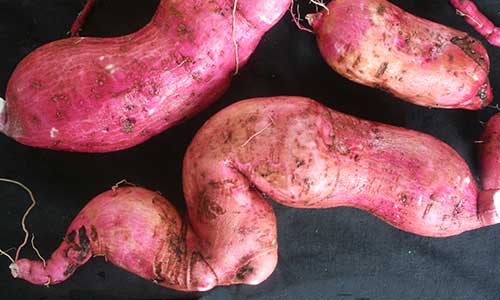
There is no plant group in Hawai‘i more dependent on people than Hawaiian crop cultivars, meaning varieties dependent on cultivation. Of approximately 26 plant species introduced by Polynesian settlers to Hawai‘i, some of the most intensively cultivated have lost the ability to reproduce by seed, and were cultivated by offshoots or cuttings for thousands of years before their introduction to Hawai‘i. Ancient farmers utilized natural somatic mutations, which are changes that arise from the plant as it grows.
Careful observation and selection by ancient farmers resulted in hundreds of uniquely Hawaiian varieties propagated clonally to preserve the changes. There are five important Hawaiian crop species with an impressive amount of genetic diversity created this way. These are
- kalo (taro; Colocasia esculenta) with possibly as high as 800 Hawaiian cultivars at one time, with perhaps 60-65 remaining today;
- mai‘a (banana; Musa sp.) with 40 Hawaiian varieties but only 19 known today;
- kō (sugarcane; Saccharum officinarum) with 50-60 sugarcane cultivars of which perhaps 35 remain;
- ‘awa (kava; Piper methysticum) with 35 or more original varieties, of which only 13 are still known;
- and ‘uala (sweet potato; Ipomoea batatas) 150-250 varieties of which very few remain or have been positively confirmed.
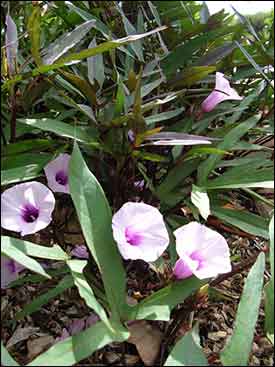
‘Uala was a hugely important crop in ancient Hawai‘i. Why are we unsure which ‘uala are heritage Hawaiian cultivars? There are several possible reasons. ‘Uala mature in only a few months, unlike other crops, like kō, that may persist for years. He ‘uala ka ‘ai ho‘ōla koke i ka wi; the sweet potato is the food that ends famine quickly. ‘Uala can still produce seeds, and sometimes these seeds germinate and may replace an original variety. ‘Uala also easily kahuli, or mutate. Leaf shapes vary, even on the same plant, making it harder to describe a variety. Last, written descriptions were made after many foreign varietal introductions and hybridizations.
The primary English language written resource for Hawaiian ‘uala is a single chapter of The Hawaiian Planter (1940) written by E.S. Craighill Handy. This publication, with Elizabeth G. Handy and Mary Kawena Pukui, later became The Native Planter In Old Hawai‘i: Their Life, Lore and Environment (1991). ‘Uala varieties being grown in 1940 included American, Japanese, and Portuguese varieties that had been in cultivation for many years. Handy writes that “probably not an eighth of the specimens I collected are reported in this paper” and also that “There are many Hawaiian varieties still planted on Kauai…Niihau ...Hawaii and on Maui that I have never seen.” He identifies 24 varieties still being cultivated at that time that were judged to be ancient Hawaiian “with the aid of information given by old native planters.”
Maui grew ‘uala in both field systems and homesteads. By 1940, ‘uala fields along the coast from Maalaea to Honokahua near good fishing grounds were mostly gone due to the displacement of Hawaiians by immigrants working the industrialized sugar and pineapple plantations. Only a few Native Hawaiians living in Makena and near Pu‘u Olai were still known to cultivate ‘uala for their families. Kula lands, the inland areas between the mountains and the sea, grew both dryland kalo and ‘uala, and even on windward Maui in Keanae, Wailua, and Nahiku in 1934 Handy saw well grown patches as well as “wild” ‘uala or remnants of old plantings. Southward from Hana town on the high slopes along the coast including Kipahulu still had homesteaders cultivating ‘uala as well during this time. But from Kaupō through Kahikinui, Honua‘ula, and Kula, from sea level up to 2,000 feet elevation, the greatest dryland, continuous planting area was still growing ‘uala in the late 1930’s. The fishermen along the coast of Kahikinui and Honua‘ula used to exchange their fish for sweet potatoes and taro grown by those cultivating ‘uala on kula lands.
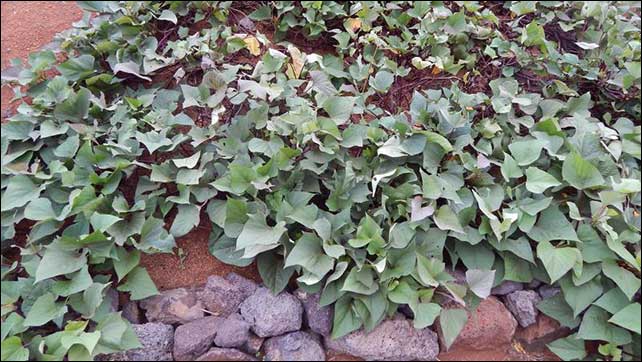 Botanists and farmers have been exchanging ‘uala and keeping ‘uala collections since at least the late 1970’s. The oldest varieties in the MNBG collection came from Waimea Arboretum (now called Waimea Valley) but some were collected by Lisa Raymond at other sites on Maui. David Orr, the curator at Waimea since 1989, states that some were collected by Rudy Mitchell in Kalaupapa in the 70’s and others were collected by Ken Nagata in 1989 from Lāna‘i City. Amy Greenwell Ethnobotanical Garden, Harold L. Lyon Arboretum, Waimea Valley, National Tropical Botanical Gardens, CTAHR’s Sustainable Organic Agriculture Program, and Maui Nui Botanical Gardens all have exchanged varieties dozens of times over the last two decades, and all currently hold some kind of collection of ‘uala varieties.
Botanists and farmers have been exchanging ‘uala and keeping ‘uala collections since at least the late 1970’s. The oldest varieties in the MNBG collection came from Waimea Arboretum (now called Waimea Valley) but some were collected by Lisa Raymond at other sites on Maui. David Orr, the curator at Waimea since 1989, states that some were collected by Rudy Mitchell in Kalaupapa in the 70’s and others were collected by Ken Nagata in 1989 from Lāna‘i City. Amy Greenwell Ethnobotanical Garden, Harold L. Lyon Arboretum, Waimea Valley, National Tropical Botanical Gardens, CTAHR’s Sustainable Organic Agriculture Program, and Maui Nui Botanical Gardens all have exchanged varieties dozens of times over the last two decades, and all currently hold some kind of collection of ‘uala varieties.
To this end, the ‘Uala Working Group is meeting regularly to continue the effort to untangle ‘uala. Meetings began in August of 2021 with the purpose of improving management and stewardship of Hawaiian and Pacific ‘uala collections through pono practices and collaborative learning, and to encourage mindful, rigorous science and practice among collections managers, researchers, and students who may seek to work with Hawaiian ‘uala varieties. The group began by requesting all researchers and botanical gardens who hold Hawaiian ‘uala cultivars collections to sign a guiding principles document. The group has developed photo documentation protocols and collections are now sharing photos of their plants as they are harvested. The University of Hawai‘i’s Mikey Kantar (Department of Tropical Plant and Soil Sciences) and Aurora Kagawa-Viviani (Department of Geography and Environment/Water Resources Research Center) have put together a research team to synthesize the current state of knowledge on Hawaiian ‘uala varieties both in historical records and contemporary botanical collections, and to investigate attributes of the different varieties. The group hopes to untangle the ‘uala collections by verifying which, if any, match historical descriptions; develop some informatic tools like online keys that can be used to identify ‘uala; and investigate pigments, proteins, and sugars in the varieties.
Penny Levin, of E Kupaku Ka ‘Āina, is also funding some research into continuation of archival research into the history of pre-European contact cultivated sweet potato varieties in Hawai‘i. They are seeking students to research varieties and planting methods in library and archival collections on Hawaii and Oahu islands. This portion of the project is seeking folks with ‘ōlelo Hawai‘i fluency, some archival research experience and good sleuthing skills because much of this work will be done with Hawaiian language newspapers and manuscripts.
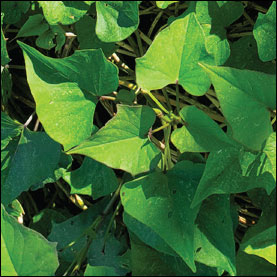
‘Ōpu palula; stomach full of sweet potato greens. Said of a person who can only grow the tops of sweet potatoes, or a poor farmer. Although knowledge of ‘uala in Hawai‘i is still poor, we are working together to better know what we grow.
Location
The Garden is located at 150 Kanaloa Avenue in Kahului, Maui, right across from the War Memorial Stadium.
(808) 249-2798
Hours of Operation
Tuesday through Saturday,
8:00 a.m. – 4:00 p.m.
Closed occasionally for inclement weather and Hawaii State Holidays.
Admission
Members: Free
General: $10
Keiki Under 12: Free
Kama'aina: Free
(with Hawai'i ID)
